Sewing your own bed linen is much cheaper than buying ready-made sets in a store. With minimal sewing skills, you can easily sew pillowcases, duvet covers, cut and serge sheets at home. The article will discuss how to sew a duvet cover with a zipper yourself.
What fabric is suitable for sewing a duvet cover
You can sew a duvet cover with a zipper, like other bedding, from a variety of fabrics. This can be chintz, calico, cambric, silk.
Each material has its own characteristics and differs in its properties:
- calico - cheap cotton fabric that is fairly easy to wash. The main disadvantage is the fragility and rapid wear resistance of the material; with regular use of linen made of calico, it quickly loses its appearance and tears;
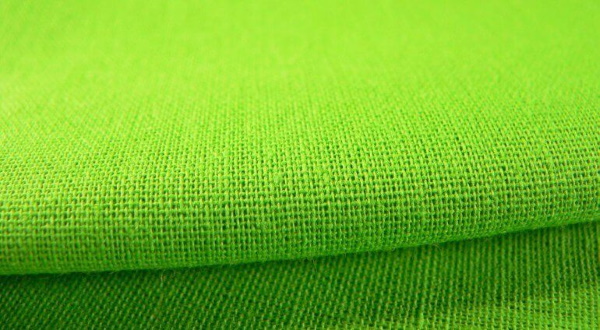
- chintz – a thin and pleasant to the touch material, which, like calico, is not particularly durable. After several washes, the pattern becomes duller and, like calico, the fabric quickly becomes thinner and tears. The main advantage of chintz is its naturalness, as it is 100% cotton;
- ranforce – is an innovative material, an improved analogue of calico fabric. Classic ranfors contains only cotton, but cheaper fabrics may also contain synthetic fibers. The fabric is woven in a special way diagonally, which is why it is smooth and durable. The material does not wrinkle and retains its original appearance for a long time. Of the disadvantages, ranfors linen should only be washed at low temperatures.
- poplin – also consists of cotton, but unlike chintz and calico, it has thicker fibers, due to which it can last 7-8 years. Poplin is pleasant to the touch, does not wrinkle after sleep, but is much more expensive than budget chintz and calico;

- jacquard - a type of satin with an interesting beautiful design. It allows air and moisture to pass through perfectly, but it wrinkles a lot and costs a lot of money. The service life of bed linen made of such material is very long;
- satin - high strength of the material is ensured by the satin weave of the threads of the fabric. The service life with proper care exceeds 10 years. After many washes, the material does not fade as much as, for example, calico and chintz. The cost of satin is high, which is a minus;
- percale – a cotton fabric of increased strength, consisting of untwisted threads. In terms of its strength and attractiveness, it is not inferior to satin, and its price is somewhat cheaper. The only difference is that satin is still more pleasant to the touch;
- flax – ideal for a night's rest, both in winter and in summer. It has a good service life (8-10 years), excellent thermal conductivity and only becomes softer over time. A well-known disadvantage of linen bed linen, including duvet covers, is that the material wrinkles a lot and is difficult to iron. Prices for linen bed linen sets are about the same as for satin sets;
- bamboo – bamboo fiber is made from the leaves and stems of the plant and can contain both cotton and synthetic threads. The material is wear-resistant, pleasant to the touch, retains its shape and brightness of colors well. Bamboo does not cause allergies and various microorganisms multiply less in it. Bamboo fabric is more expensive than calico, chintz and poplin;
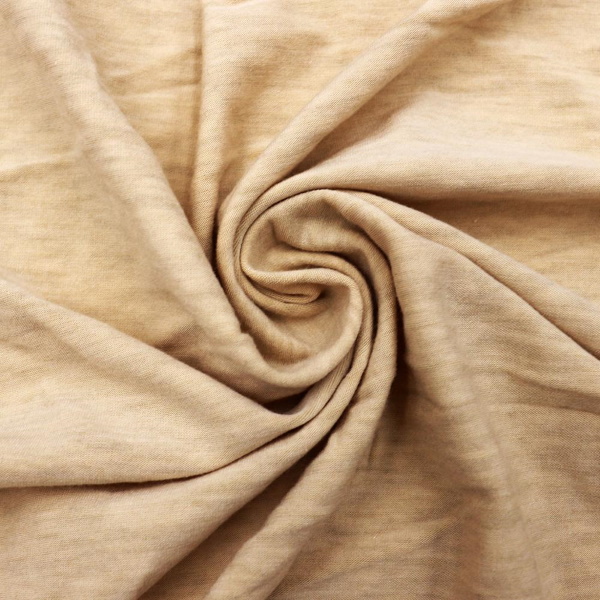
- viscose – made of cellulose. The softness of the fabric depends on the degree of processing. Viscose is a natural material and feels like flax. It is in the middle price category;
- batiste - is a soft and smooth material, which is mainly used to make gift bedding sets. Despite its attractiveness, the fabric wears out quite quickly and after some time begins to tear;
- microfiber - durable synthetic material. It does not tear or deform, but does not allow moisture and air to pass through well. It can cause unwanted allergic reactions on the skin;
- silk - a soft to the touch fabric that looks and costs expensive. Requires delicate care when washing and ironing. Some people do not like the cold and slippery sensations that this material gives;
- mahra - cotton predominates in the composition. The material has a fleecy surface, due to which it is very warm. It is better to sleep on such linen in the cold season. In terms of wear resistance, it is average in all parameters, since it quickly loses its appearance;
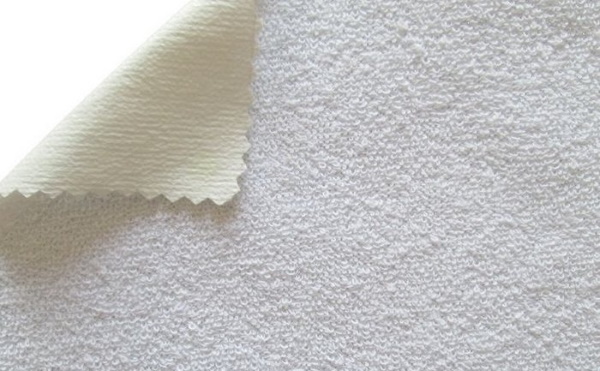
- flannel – another type of warm material suitable for sleeping and relaxing in winter. The material is inexpensive. Over time, pellets form on the fabric, which makes it tactilely less pleasant. Flannel bedding should not be washed at temperatures higher than 30-40 °C and should not be wrung out at too high a speed.
You can sew a duvet cover with or without a zipper from any fabric. All of them are equally suitable for sewing duvet covers and other bedding. Of course, inexpensive fabrics are in greater demand - chintz, calico.
In any case, if you have little experience in sewing, it is better to start practicing using fabrics from a cheaper price segment rather than expensive materials.
What type of zipper to choose
A duvet cover with a zipper is much more convenient to use than a similar product with a simple opening without a fastener. The main thing when sewing a duvet cover is to make the right choice and choose a zipper that will be convenient and can serve for a long time.
All zippers are equally convenient, but each type has its own characteristics. A zipper with metal teeth is not very suitable for sewing into a duvet cover, as it often gets stuck and its teeth often fall out. Despite the durability of a metal zipper, if even one tooth breaks, it will have to be replaced completely. For the same reasons, it is better not to sew a tractor zipper into a duvet cover.
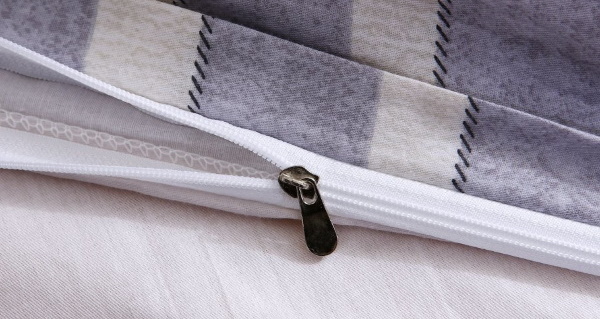
The most ideal zipper option for a duvet cover is a spiral zipper. It is distinguished by its durability, since it is almost impossible to lose its teeth, and it works well, without delays or jams. In addition to spiral zippers, hidden zippers are also suitable for duvet covers, although they are most often used when sewing children's underwear and their insertion into the product is quite difficult.
The zipper for bed linen must meet the following criteria:
- match the tone of the bed linen;
- have a metal runner;
- have size No. 3, since it is the most suitable due to the fact that the zipper puller is almost invisible, but at the same time it can be easily felt and picked up;
- be inseparable;
- be a few centimeters longer than the duvet cover opening.
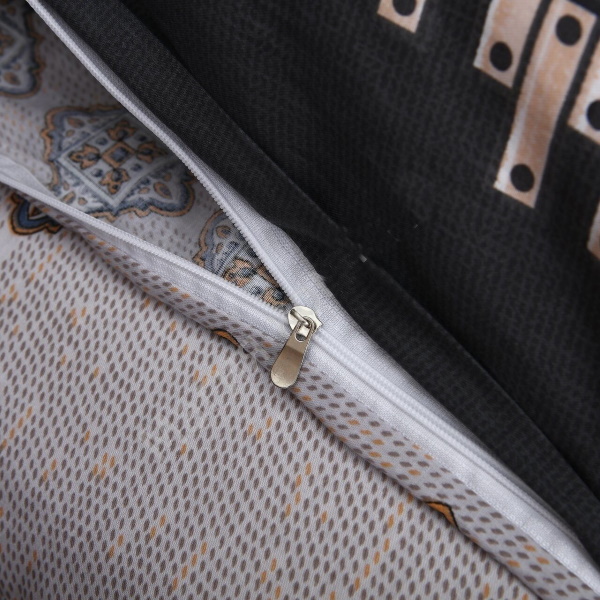
Also, if desired, a simple slider can be replaced in a spiral zipper with a special underwear slider that does not have a keychain. It can be purchased either separately from the fastener or together with it.
What do you need to sew a duvet cover with a zipper?
Sewing a duvet cover with a zipper yourself is not that difficult if you have minimal sewing skills and the necessary supplies.
To work you will need:

| Basic inventory | · sewing machine, · overlock, · working surface. |
| Sewing accessories | · material;
· threads; · ruler; · scissors; · chalk or pencil; · foot for sewing in zippers. |
If you plan to sew in a concealed zipper, it is better to use a special foot designed specifically for this purpose. Otherwise, it will not be possible to sew the zipper at the bottom of the duvet cover correctly, since the teeth of a concealed zipper are directed inward compared to a regular zipper, and when working, it is necessary to bend them as much as possible.
Step by step instructions
Sewing a duvet cover with a zipper is not difficult. If you have little sewing experience, then it will be enough to follow the instructions.
Sewing a duvet cover includes several stages:
- fabric preparation (cutting);
- sewing the base itself;
- sewing in a zipper.
Fabric marking, pattern
For a duvet cover, you will need from 3.55 m to 3.75 m of fabric. The specific value will depend on the size of the blanket, which can be double, single, children's or non-standard. The fabric is marked with chalk or a special pencil.
The parts are cut out as follows:
- On the canvas, measure 220 cm in width and 355-375 cm in length. The middle of the fabric will be the fold line. For this size, seam allowances are already included. When cutting out a canvas of a different size, you should add at least 6-8 cm in length for the allowance and the same in width.
- If the fabric is not one piece, then cut out 2 pieces, each of which is 220 cm wide and 177.5 cm-187.5 cm long.
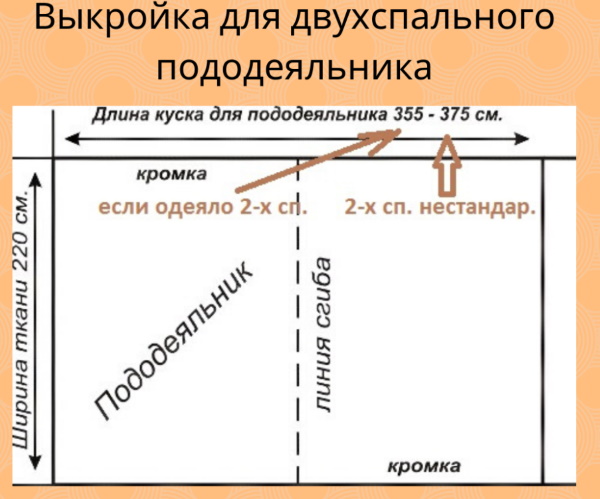
It is most convenient to carry out all the necessary manipulations with fabric at home on the floor, if there is no really wide table. It is important that the fabric is cut evenly and symmetrically.
Sewing the base of the duvet cover
The process of sewing all sides together is also not complicated:
- Along the long side, which measures 355-375 cm, the fabric is folded in half, facing right side to left side.
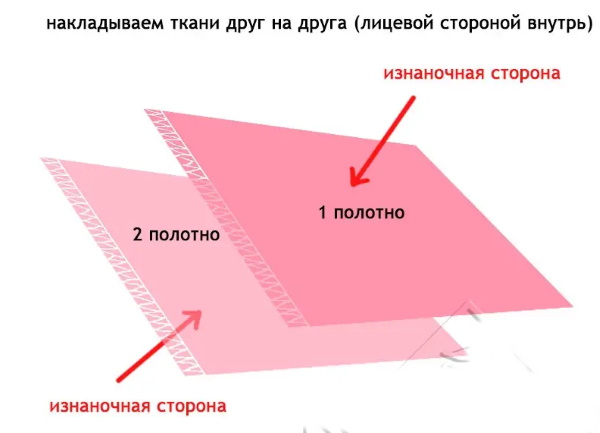
- The fabric is sewn on both sides that have an edge. These sides do not need overcasting. If a slit is planned on one of these sides, then a 50-60 cm long opening is left when stitching.
- The side without the edge is stitched and processed with an overlock (precisely an overlock, because if you make a zigzag seam, then over time the edge will begin to crumble after washing).
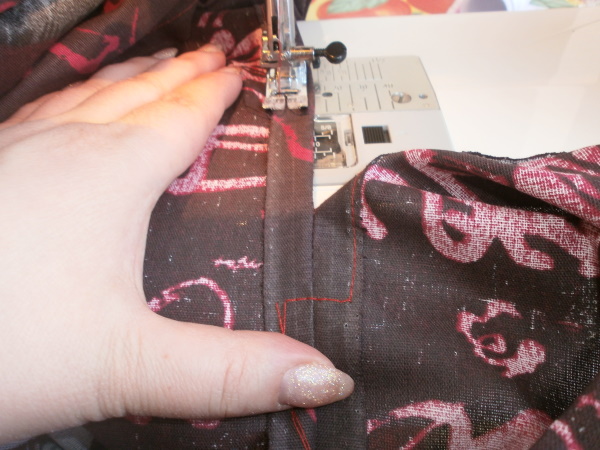
Ready.
How to sew a zipper into a duvet cover
When the main product is ready, it is turned inside out and the place where the zipper will be sewn is ironed.
Sew in the zipper as follows:
- On both sides at the end of the slit, make a strong stitch (several stitches perpendicular to the main seam connecting the fabric) so that the seam does not come apart.
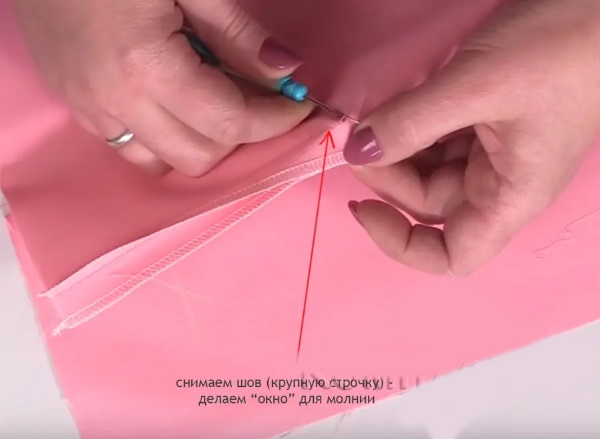
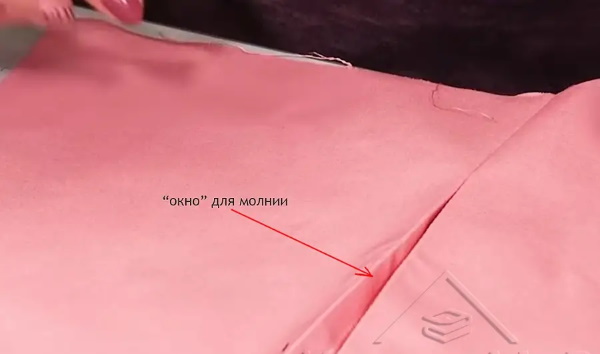
- The zipper is sewn to the fabric only when unzipped. The unzipped zipper is aligned with the opening so that its edge is under the seam. If the zipper is a regular spiral zipper, its teeth will be on the front side of the duvet cover, if it is a hidden zipper, then on its inner part.
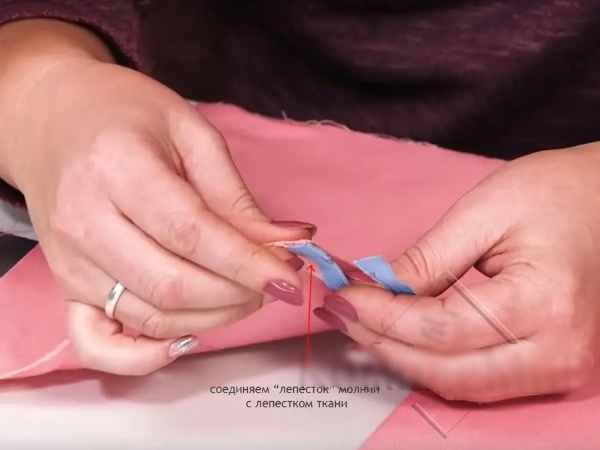
- To prevent the zipper from "riding", it is attached to the fabric using tailor's pins and then neat seams are made. This method assumes that during the stitching process the result will be immediately visible on the front side, which allows better control over the quality of the stitching.
- Careful fastenings are made on each side so that the seam connecting the zipper to the duvet cover does not come apart. If there are extra ends left after hemming the zipper, they are carefully trimmed.
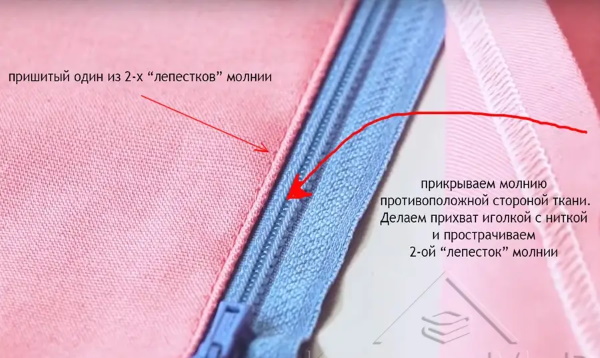
- The same thing is done with the second side.
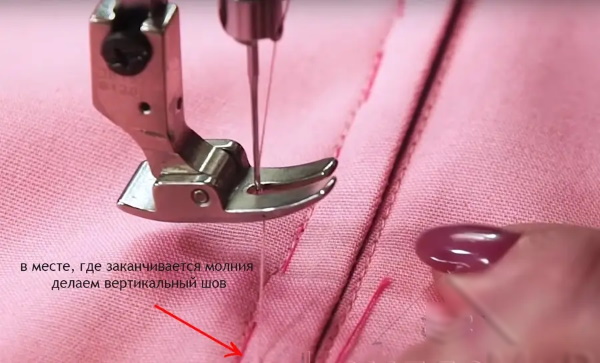
When sewing on a zipper, the slider is moved to the already sewn part so that it does not interfere with finishing the stitching. You can also sew on the zipper from the inside. This is done by turning the product inside out and aligning the zipper with the fabric, in exactly the same way as described above.
It is quite easy to sew a duvet cover with a zipper yourself. Even if everything does not turn out perfectly the first time, you can always rip the seam and redo the places where the zipper is sewn in more neatly. A duvet cover sewn by yourself will cost much less than one bought in a store, and will look just as good. Having learned how to sew bedding, you can save money and have a whole collection of various bedding sets.
Video on how to sew a duvet cover with a zipper
How to make a duvet cover with a zipper:
